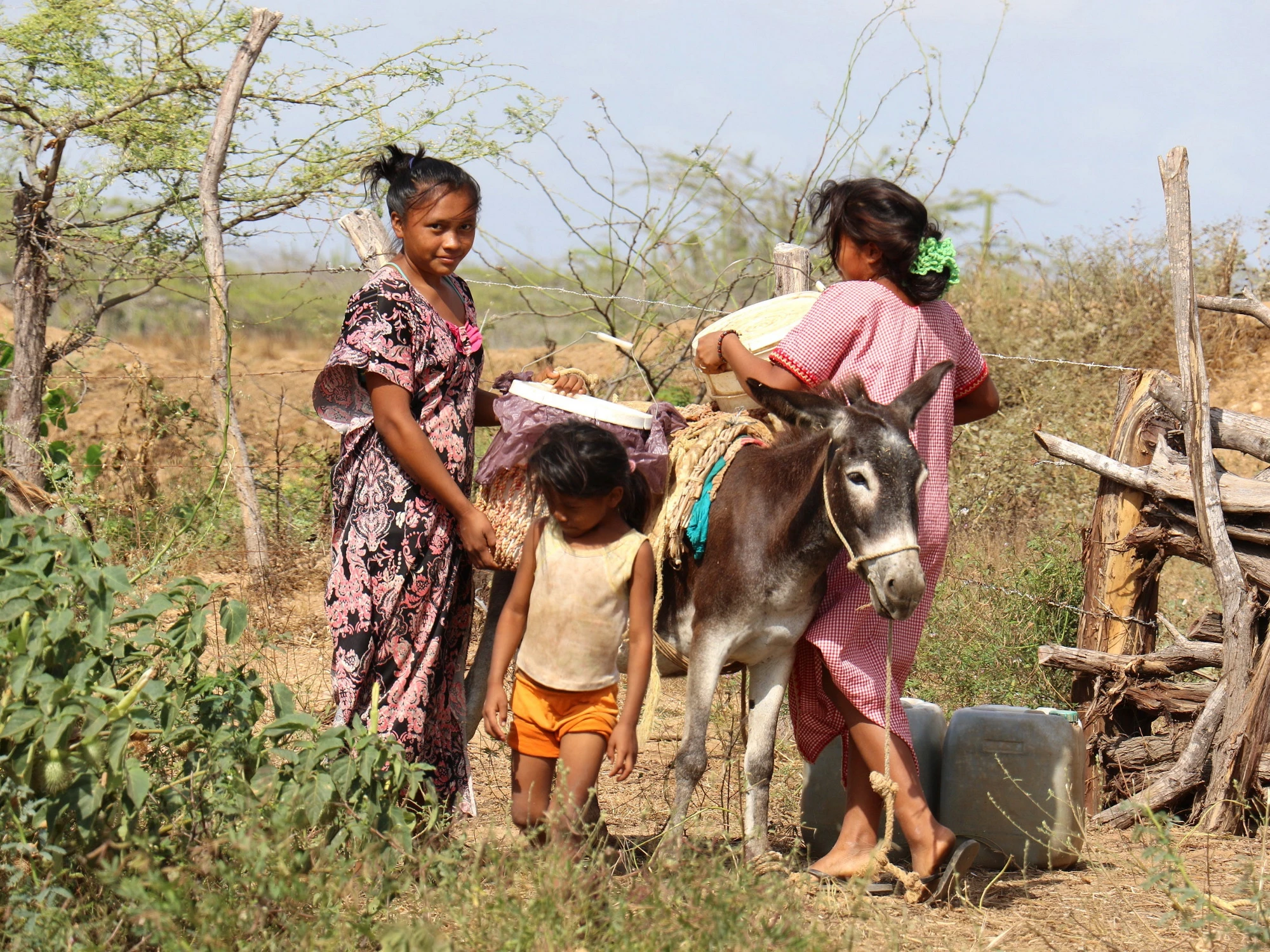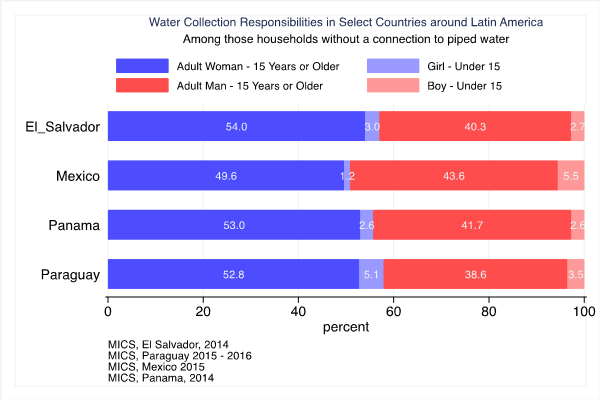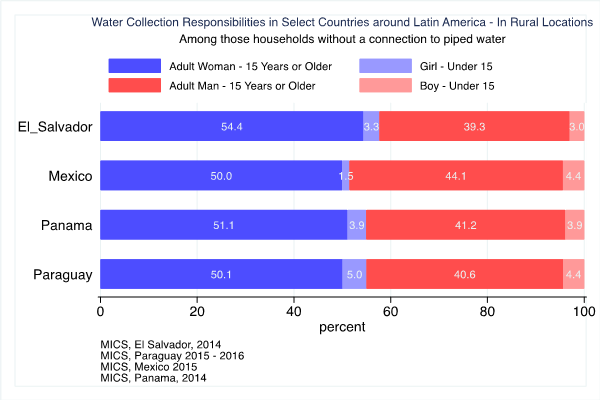 women in Colombia collecting water
women in Colombia collecting water
With the move from the Millennium Development Goals (MDGs) to the Sustainable Development Goals (SDGs) came an expansion in the ladder used to measure access to water, sanitation, and hygiene (WASH). The SDGs WASH indicators added layers to better reflect the needs of vulnerable populations; SDG 6.1 reads: “by 2030, achieve universal and equitable access to safe and affordable drinking water for all.” Equitable access to water is to be interpreted broadly, as: “progressive reduction and elimination of inequalities among population subgroups.”
One of the clearest ways in which gender inequalities play-out in access to WASH services is in how heavily the burden for fetching water falls on women. A UNICEF report, 2017 Progress on Drinking Water, Sanitation and Hygiene, found that “women and girls are responsible for water collection in 8 out of 10 households with water off premises.”
Gender divisions in water-fetching responsibilities have broader implications for social equality; in addition to mirroring larger societal stereotypes, burdening women with the responsibility of fetching water constraints the opportunities available to them and hampers their social mobility.
And the gender divisions are stark: evidence from the WASH Poverty Diagnostic initiative, administered across 18 countries, found that “where water is not available on premises, females are far more likely globally to bear the burden of collection.”
Similarly, in The Rising Tide: A New Look at Water and Gender, Maitreyi Bordia Das and Gaia Hartzfeldt offer evidence linking levels of water contamination to gender-burdens in water-collection responsibilities. The authors cite a study conducted in West Bengal, India, and Bangladesh which found that, as the salinity of water goes up, girls are “5.3 percentage points more likely to be responsible for water collection and skip school.”
To further focus the spotlight on the gendered dimension of water-fetching responsibilities, consider the following nationally representative findings from the Multiple Indicator Cluster Surveys (MICS), administered in four countries across Latin America[1].
Across countries, women bear most of the responsibility for fetching water.

In those households where water needs to be collected, 57 % of those collecting water in El Salvador, 55.6 % of those fetching water in Panama, and 57.9 % of those fetching water in Paraguay are women. In Mexico, the burden of fetching water seems more evenly divided: with 50.8 % of women burdened with water-collection responsibilities (Figure 1).
Surprisingly, even though rural locations typically have a greater portion of the population not connected to a piped system (and thus are places where household members are more likely to have to fetch water), water-collection responsibilities are not more gendered in rural locations. In fact, in Paraguay, the reverse is true: 68.7 % of women in urban Paraguay are in charge of collecting water vs. 55.1 % of women in rural locations (Figure 2 and Figure 3). The factors driving the urban-rural divide in water-collection responsibilities in Latin America, and elsewhere, is a subject that merits additional exploration.


Gender divisions in water-fetching responsibilities have broader implications for social equality. In addition to reflecting deeply-rooted, gendered, social roles, burdening women with the task of fetching water limits their use of spare time; it restricts women’s ability to invest in gaining skills, education, and to engage in entrepreneurial activities which may improve their human-capital. It also raises the opportunity costs of working, lowers their reservation wages, and hampers women’s capacity to earn income and integrate into the labor market. The burden is even heavier for small girls, as loading the burden of fetching water onto them limits their ability to attend, and finish, school.
With the World Bank taking a more active role in mainstreaming gender initiatives across its different development initiatives, it’s important to place greater visibility on women, and the disadvantages they face in the water-sector. As we keep an eye on SDG target 6.1, we should re-double our efforts to lift the water-carrying burden off women’s shoulders.
[1] The MICS survey has been administered relatively recently in an array of countries in Latin America: Paraguay, Mexico, Dominican Republic, El Salvador, Cuba, Panama and Uruguay.
The question on water collection responsibilities was asked only to those households without a connection to piped water. Uruguay was excluded from the analysis presented because the responses to the question on water collection responsibilities had a very small sample size.
Cuba and Dominican Republic were excluded for succinctness, and to focus on inland countries, which we believe may be more easily comparable among themselves.



Join the Conversation